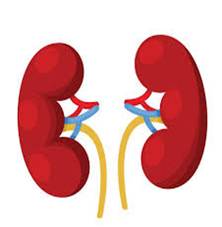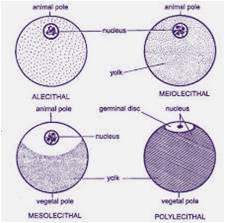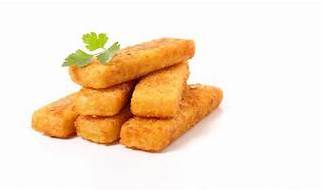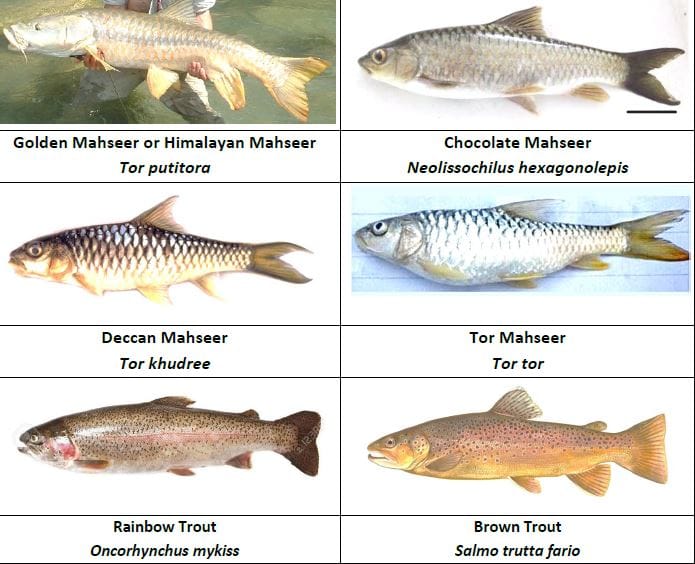Indigenous small fish species: Small fishes are found in ponds, tanks, lakes, floodplains, lowland areas, streams, wetlands, paddy fields and rivers and tributaries. They maximum grow up to a size of 25-30 cm in their life cycle. In India, there are a total 930 native inland water fish species, about 450 are Small Indigenous small fish species. Out of these fishes about 62 Indigenous small fish species have been categorized as food fish, while 42 fish species are as ornamental and some are of cultivable Indigenous small fish species like- Climbing Perch, Bata, Mola, Barbs.
Indigenous Small Fish Species
Some of the Indigenous small fish species characteristic and importance are as follows-
1. Amblypharyngodon mola (Ham) 1922.
 |
| Amblypharyngodon mola |
B.3; D.9 (2-7); P.15; V.9; A. 7 (2-5); C.19; L.I. 65-75; L.tr. 11/12.
Popular names : Minnows or carps
Local names : Mola carplet
Environment : Benthopelagic, freshwater.
Climate : Tropical.
Dangerous : Harmless.
Characters :
Length of head is 5 and the height of the body ranges from 4 to 4.5 in the total length.
Abdomen is rounded. Head is slightly compressed.
Mouth is anterior, the lower jaw being slightly more prominent and elongated.
Dorsal fin profile is more convex than that of the abdomen.
Caudal fin is forked.
Lateral line is interrupted.
The Color of the body is a silvery lateral band present on either side of the body and small black dots on the upper 3/4 surface are present.
Remarks : It grows up to about 20 cm. TL and used as food by the poor.
Importance : fisheries of no interest.
2. Salmophasia phulo (Hamilton, 1822)
 |
| Salmophasia phulo |
Popular names : Silverfish, minnows or carps.
Local names : Dannahree, Chela phulo.
Environment : benthopelagic, freshwater.
Dangerous : Harmless.
Characters :
Length of head is 5.5 and the height of body range from 4.5 to 5 in the total length.
Body is elongated and compressed.
The maxilla reaches below the front margin of the orbit.
The dorsal fin arises opposite the origin of the anal fin.
The caudal is deeply forked and its lower lobe longer.
Lateral line curves gently downwards.
Colour of the body is silvery with a bright lateral bond on both sides.
Remark : It grows up to 13 cm in length.
Importance : fisheries of no interest.
3. Salmophasia bacaila (Hamilton, 1822)
 |
| Salmophasia bacaila |
B.3; D.9-11 (2/7-9) 0; P.12-13; V.9; A. 13-17 (2/11-15); C.19; L.I. 86-110; L.tr. 17-7-196-10-116-10.
Popular names : Minnows or carps.
Local names : Chelliah.
Environment : benthopelagic, freshwater, brackish.
Climate : Tropical.
Dangerous : Harmless.
Characters :
Length of head ranges from 5.2 to 6 and the height of body from 5.5 to 6 in the total length.
Body is elongated and compressed.
Cleft of the mouth touches the first fourth of the eye.
Mouth is directed upwards.
First anal ray is in the middle of the dorsal fin.
Pectorals are elongated. Caudal fin is forked.
Lateral line is complete with a downward curve at the pectoral fin.
Scales are small and thin.
The Colour of the body is silvery white.
Remark : It provides a good dish for a poor meal.
Important : fisheries of no interest.
4. Puntius sarana-sarana (Ham) 1822
 |
| Puntius sarana-sarana |
B.3; D.11-12 (3/8-9); P.15-16; V.8-9; A.8 (3/5); C.19; L.I.32-34 L.tr. 5½- 6½|6; Barbels 4.
Popular name : Olive Barb.
Local names : Giddi-Kaoli, Durhie , Potah
Environment : Benthopelagic ,freshwater ,potamodromous , brackish
Climatic : Tropical.
Dangerous : Harmless.
Characters :
Length of head ranges from 5 to 5.2 and the height of body from 3.5 to 3.7 in the total length.
The dorsal profile of the body is slightly elevated.
Interorbital space is convex.
Two pairs or barbels are present, the rostral pair as long as the orbit, maxillary pair is slightly longer.
Dorsal fin inserted nearer snout than caudal fin base.
Caudal fin is deeply forked.
Lateral line complete with 30 to 33 Scales.
Colour of the body is silvery, darkest dorsally, opercles golden, fins dusky brown to orange, mostly some dark spots behind the opercle.
Remarks : It grows up to 31 cm in length and is much valued as food.
Importance : Fisheries: Minor commercial , game fish: yes, aquarium: commercial.
5. Puntius ticto (Ham) 1822.
 |
| Puntius ticto |
B.3; D. 11 (3/8); P.13 -15; V.9; A.7-8 (2-3/5); C.19; L.I. 23-26; L.tr. 5-6|6-6 ½
Popular names : Fire- fin Barb.
Local names : Kaoli.
Environment : Benthopelagic, freshwater, brackish ,pH range 6.5 – 7, dH range 10.0
Climate : Tropical
Dangerous : Harmless.
Characters :
Length of head is 5 and the height of body ranges 3 to 3.2 in the total length.
Body is strongly compressed and elevated
Upper jaw is slightly longer than the lower jaw
Barbels are absent, teeth are pharyngeal, crooked and pointed.
Mouth is terminal and small.
Dorsal fin inserted slightly posterior to pelvic fin origin.
Caudal fin is forked.
Lateral line is complete with scales 23 to 25
Colour in ornamental pattern showing iridescence and red edging of dorsal fin.
A black blotch is located on the side of the tail before the base of the caudal fin.
Remarks : It grows upto 10.0 cm in length. It is consumed as food by poors. It is also a larvicidal fish.
Importance : fisheries of no interest; aquarium: commercial.
6. Rasbora daniconius (Ham) 1822
| Rasbora daniconius |
B.3; D.9 (2/7); P. 15; V.9; A.7 (2/5); C.19; L.I. 31-34; L.tr. 4½ – 5½| 4½ – 5.
Popular name : Common Rasbora.
Local names : Dandai, Dondai gana
Environment : Benthopelagic, freshwater, Potamodromous, brackish pH range 7, dH range 12.
Climate : Tropical 24-280C.
Dangerous : Harmless.
Characters :
Length of head ranges from 4.5 to 5 and the height of body from 4.5 to 5.2 in the total length.
Body is cylindrical and slightly compressed with a rounded abdomen.
Lower jaw is with a central and two lateral prominences.
Barbels are absent.
Dorsal fin arises nearer to the origin of the ventral than that of the anal.
Caudal fin is forked.
Lateral line is concave
Body is greenish yellow in the upper half and is shot with black dots. Lower half of the body is silvery white. The tips of the fins are brownish black or deep yellow.
Remarks : It attains a maximum length of 14 cm. It is an efficient larvicidal fish and consumed as food by the poor classes of people.
Importance : Fisheries : minor commercial; aquarium : commercial.





